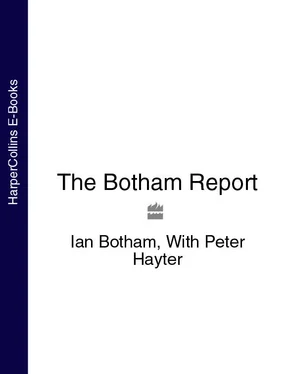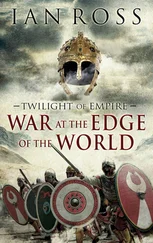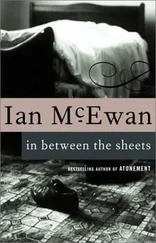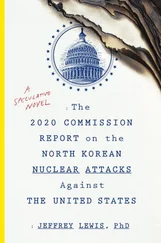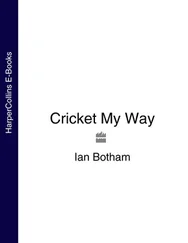MacLaurin had done his homework and discovered that the stamps had become an unwanted anachronism. As he said, ‘Stamps had been an integral part of Tesco’s success, but it was very apparent to me visiting the stores, that the customers didn’t want them anymore. They were costing us, Tesco’s, £20 million per year to produce, and the customers were handing them back.’ Certain that he was right and that the company needed to shed its ‘pile ‘em high, sell ‘em cheap’ image and be repositioned upmarket, MacLaurin would not be shaken off. It took five bitter recounts for him to win the boardroom vote 5–4 and earn the right to pursue his plans to transform the company.
He said, ‘Before I attempted to turn Tesco around and into a world class act, people told me I was crazy. They said it simply couldn’t be done. I heard the same things about taking on English cricket. But there is an awful lot to be done.
‘I don’t want to criticise what has gone on in the past, but we cannot shy away from the fact that England’s Test team have not been in the top echelon of international cricket for some time.
‘There are those who persist in claiming that success in cricket is cyclical, that if you wait long enough it’ll all come right of its own accord. I simply don’t believe that is true.
‘You wouldn’t last very long in my business if you just said “everything is cyclical”. Just imagine if you went to the shareholders and told them, ‘I’m terribly sorry that we’ve lost all this money this year, but I’m sure if you hang on and keep investing your cash, perhaps in a few years time we might make a profit.’ We have to be realistic. If nothing is done to turn things round, the most pessimistic scenario is that the game will wither on the vine.’ MacLaurin has a clear view of the alternative to decisive action. It goes like this: ‘If we continue to do badly at international level and end up getting beaten by the Isle of Dogs, people will simply not pay to come and watch, and neither will the television companies whose money along with Test match receipts subsidises the first-class game. Then the counties will be in dire financial straits and the kids will ask, ‘what was cricket?’
When MacLaurin and Lamb set about preparing their blueprint for the future structure of English cricket the illusion of progress created by England’s victory in the 1997 Texaco Trophy series against Australia then the win in the first Ashes Test at Edgbaston enabled the more reactionary county chairmen to stick their heads back in the sand and say: “I told you so.”
Mindful of this MacLaurin and Lamb knew they had little or no chance of pushing through their preferred option for change – two divisions and promotion and relegation. Instead they fudged the issue, concocted a totally baffling alternative known as the three conference system and when that was laughed out of court, the barely-believable compromise of the radical status quo. Do me a very large favour.
Under this scheme the top eight sides in the 1998 county championship will go forward to play a one-day tournament known as the Super Cup in 1999. Quite what relevance such a competition will have to the business of making England better at Test cricket is anybody’s guess.
There are moves afoot to blow this out of the water. The Professional Cricketers Association came out heavily in favour of two divisions towards the end of the 1997 season. At their meeting on May 11, 1998 they warned that should their voice be ignored again steps might be taken to coerce certain clubs into seeing the error of their ways. Whisper them, but the words ‘strike action’ have been heard. To those who fear for the future of their own clubs should this scheme be implemented I say: shouldn’t the players be allowed to decide?
For those among the county chairmen who don’t believe things are as black as they are being painted, just consider these facts. Since retaining the Ashes in 1986–87 and prior to the start of the summer series of 1998 against South Africa and Sri Lanka, England had not won a full five-or six-Test series against anyone. Between the start of the 1987 home series against Pakistan and the final Test of the 1998 winter tour to West Indies, England played 113 Tests and won 23 of them. Out of eighteen series against the top-rated cricketing nations, Australia, Pakistan, West Indies and South Africa, they failed to win one, drew four (two versus West Indies in 1991 and 1995, one against South Africa in 1994 and a drawn one-off Test against Australia in 1988) and lost fifteen (five out of six versus Australia, four out of four against Pakistan, four out of six against West Indies and one out of two against South Africa).
They did win eight series, four against New Zealand, two each against India and Sri Lanka. In the period concerned they failed to win a Test series against Pakistan, Australia, South Africa, West Indies and later Zimbabwe, and both single Test match victories against the Aussies had come after the Ashes had already been decided in their favour. That record put them near the bottom of the unofficial ratings of world cricket, an assessment underlined when Benson & Hedges, the sponsors of the 50-over domestic one day competition, brought out their annual yearbook at the end of the 1997 season, and named their Benson & Hedges Cricket Year World XI. For the second year in succession not one place was filled by an Englishman. Their XI for 1997 was Saeed Anwar, Pakistan; Sanath Jayasuriya, Sri Lanka; Brian Lara, West Indies; Sachin Tendulkar, India; Aravinda de Silva, Sri Lanka; Steve Waugh, Australia; Ian Healy, Australia; Shane Warne, Australia; Curtly Ambrose, West Indies; Allan Donald, South Africa and Glenn McGrath, Australia. In that team there was no place for Wasim Akram, Waqar Younis, Mohammed Azharuddin, Anil Kumble, Courtney Walsh or Aamir Sohail.
Nor was there a place for any of the England side that played against Australia in the final Test of that summer series of 1997: Mike Atherton, Mark Butcher, Alec Stewart, Nasser Hussain, Graham Thorpe, Mark Ramprakash, Adam Hollioake, Andy Caddick, Peter Martin, Phil Tufnell and Devon Malcolm.
And nor, if the XI had been selected at the end of England’s series in West Indies would have the selectors been unduly taxed by the claims of Dean Headley, Jack Russell, and despite his excellent series, Angus Fraser. In other words, not one of the best eleven players that England could produce to contest a Test match in 1996 or 1997 was considered good enough to represent a World XI.
In fact, throughout the 1990s so far, only four England players have been picked for the Benson & Hedges teams.
Further evidence that, in terms of international standing England players are just not good enough came with the publication of the 1997 Wisden Cricketers’ Almanack. One of the most keenly-awaited features included in the cricketers’ bible is the annual nomination of their ‘Five Cricketers of the Year’. Their selection for 1996 was Sanath Jayasuriya, the man who turned ‘pinch-hitting’ into a new cricketing art form during Sri Lanka’s astonishing World Cup victory; Saeed Anwar, the Pakistan Test opener; Phil Simmons, the West Indies Test all-rounder who inspired his adopted county Leicestershire to the Championship; Mushtaq Ahmed, the Pakistan and Somerset leg-spinner; and Sachin Tendulkar, the Indian master. Sadly, England players were conspicuous by their absence.
According to Matthew Engel, the editor of Wisden: ‘The 1996 cricket season in England was in some respects the most depressing in memory.
‘The consistent failure of the England team is the biggest single cause of the crisis, but it is not the crisis itself. The blunt fact is that cricket in the UK has become unattractive to the overwhelming majority of the population.’
Читать дальше
